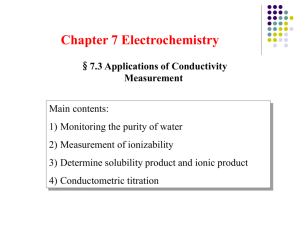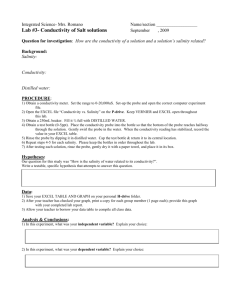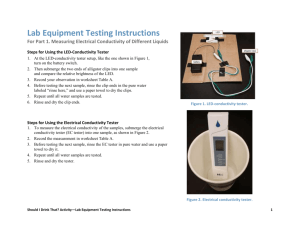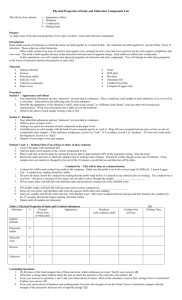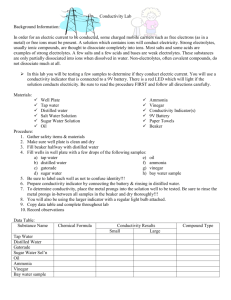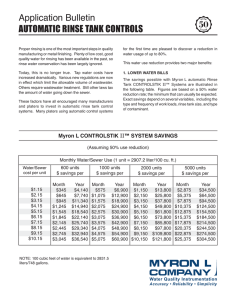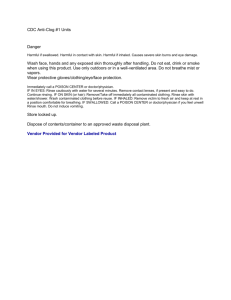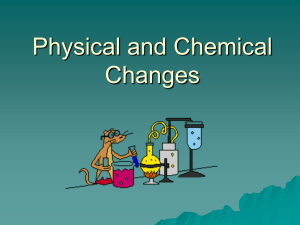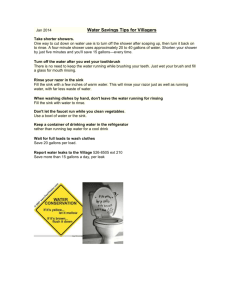Tests and Protocols
advertisement
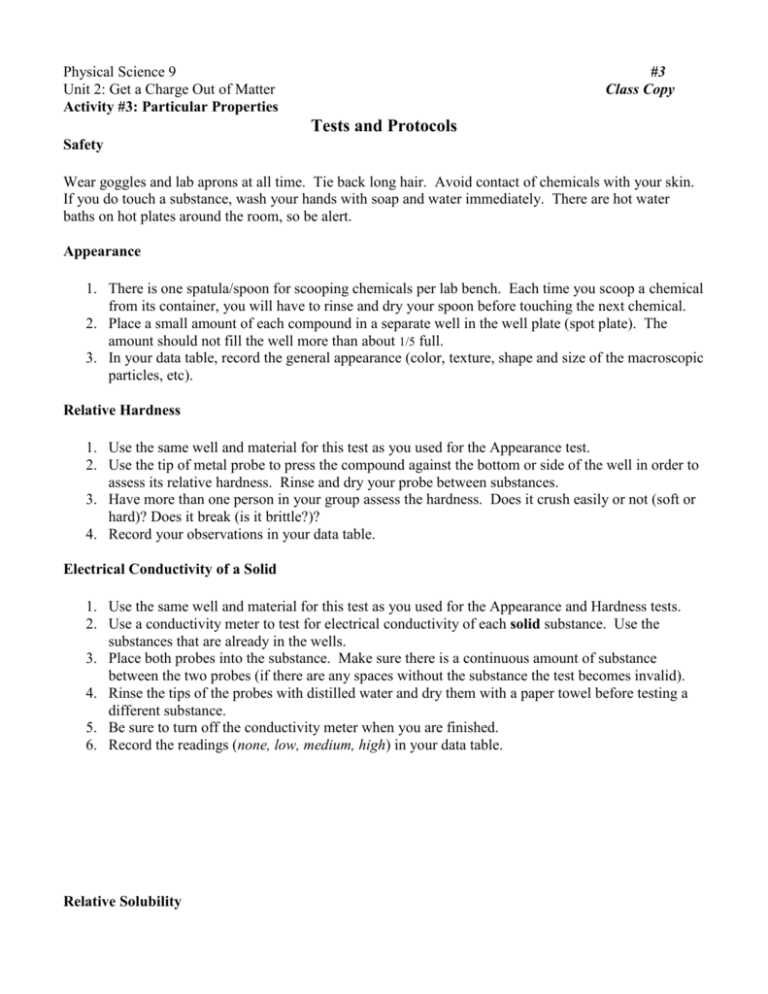
Physical Science 9 Unit 2: Get a Charge Out of Matter Activity #3: Particular Properties #3 Class Copy Tests and Protocols Safety Wear goggles and lab aprons at all time. Tie back long hair. Avoid contact of chemicals with your skin. If you do touch a substance, wash your hands with soap and water immediately. There are hot water baths on hot plates around the room, so be alert. Appearance 1. There is one spatula/spoon for scooping chemicals per lab bench. Each time you scoop a chemical from its container, you will have to rinse and dry your spoon before touching the next chemical. 2. Place a small amount of each compound in a separate well in the well plate (spot plate). The amount should not fill the well more than about 1/5 full. 3. In your data table, record the general appearance (color, texture, shape and size of the macroscopic particles, etc). Relative Hardness 1. Use the same well and material for this test as you used for the Appearance test. 2. Use the tip of metal probe to press the compound against the bottom or side of the well in order to assess its relative hardness. Rinse and dry your probe between substances. 3. Have more than one person in your group assess the hardness. Does it crush easily or not (soft or hard)? Does it break (is it brittle?)? 4. Record your observations in your data table. Electrical Conductivity of a Solid 1. Use the same well and material for this test as you used for the Appearance and Hardness tests. 2. Use a conductivity meter to test for electrical conductivity of each solid substance. Use the substances that are already in the wells. 3. Place both probes into the substance. Make sure there is a continuous amount of substance between the two probes (if there are any spaces without the substance the test becomes invalid). 4. Rinse the tips of the probes with distilled water and dry them with a paper towel before testing a different substance. 5. Be sure to turn off the conductivity meter when you are finished. 6. Record the readings (none, low, medium, high) in your data table. Relative Solubility 1. Use a new well. 2. Use tweezers to place ONLY a small amount (just a few pieces of the substance!) of each substance in a separate well. Fill the well with distilled water to about ½ to ¾ full. Use a clean toothpick to stir the mixture until the substance dissolves or until 2 minutes has passed. 3. Rinse the tweezers with distilled water and dry them with a paper towel before testing a different substance. Discard toothpicks. 4. Record in your data table whether the compound is soluble, partially soluble or insoluble (not soluble). 5. You will use these solutions in the next test. Electrical Conductivity of a Substance in Solution 1. Use a conductivity meter to test for electrical conductivity of each substance in solution. Use the substances that are already dissolved in the wells. If a substance is not soluble, this test can be skipped. 2. Place the tips of both probes into the solution. Rinse the tips thoroughly with distilled water before testing a different solution. 3. Rinse the tips with distilled water when you are finished. Be sure to turn off the conductivity meter. 4. Record the readings (none, low, medium, high) in your data table. Relative Melting Point 1. Notice that there are test tubes already labeled for Lauric Acid and for Paraffin. Test tubes for the other substances are not labeled. They will require you to keep track of them and to wash them when you are finished. 2. Place a small amount of each substance in a test tube. Place the test tube in the 85 °C water bath. Be careful to keep track of your test tubes. 3. Check the contents of the test tube after 3 minutes. If the chemical compound melted, then record “low” melting point in your data table. 4. If the compound did not melt, then check with your teacher to find out if it has a “medium” or “high” melting point. 5. Be careful when you remove your test tube it will be hot. There are test tube holders at your lab bench if you need them. 6. When your test tube has cooled, pour any unmelted material back into its container at your lab bench. You will not need to do anything to the Lauric Acid and Paraffin test tubes. 7. Rinse your test tube and let it drain (it may need to be carefully dried on the inside with a paper towel before adding the next chemical). Cleaning the well plates and the lab bench 1. Use forceps to pick out non-dissolved chemicals from the solution wells and place them a paper towel. Use a paper towel to soak up all the solutions. Discard the paper towels in the waste can. 2. Discard all solid chemicals from the well plates into the waste container at the front of the classroom. Wash and rinse the well plate. Dry it completely for the next class. 3. Wipe down the lab bench. Wash your hands. Remove your safety equipment.
